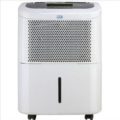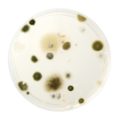
Unlike pollen allergies where you have specific "danger" times during the year, mold allergies can attack at any in any season. Runny nose, sneezing, irritated eyes and respiratory issues can all be caused by this allergen. Mold is everywhere and though it may be hard to get away from, there are still ways to limit your exposure.
The key to preventing mold in your home is controlling moisture levels, according to Päivi Salo, PhD, an epidemiologist with the National Institute of Environmental Health Sciences. In a WebMD article, Salo explained, "Molds need water to live. Indoor mold tends to grow in places that are moist or damp, such as on bathroom tiles, near sinks, in damp basements or crawl spaces, and areas around windows."
Learning to limit the places mold can gain a foothold in your house is key. Venting anything that may produce a moisture build up is one way to do this. Using an exhaust fan or simply opening a window while you shower can stop moisture from settling in the bathroom, on tiles and behind fixtures and cabinets. Plumbing problems or leaks should be fixed and cleaned immediately. Damp wood is a favorite spot for mold to multiply so it is suggested that any wet spots be dried within 48 hours.
Another sure way to remove moisture and humidity from your home is to purchase a dehumidifier. A dehumidifier can keep the household humidity level at a perfect level (30 to 60 percent) to avoid the spread of mold. Allergybegone.com offers quality dehumidifiers like the KUL KU34643 65 that will reduce moisture and help keep your home mold-free.









